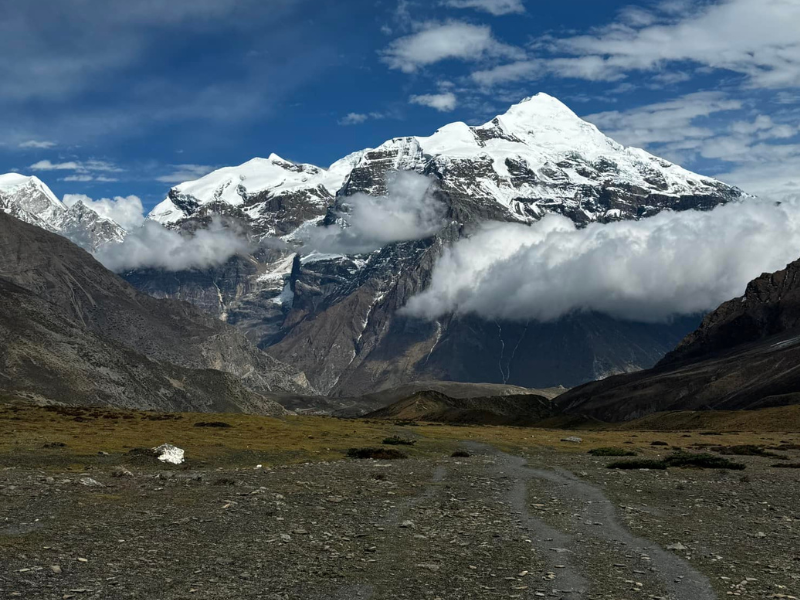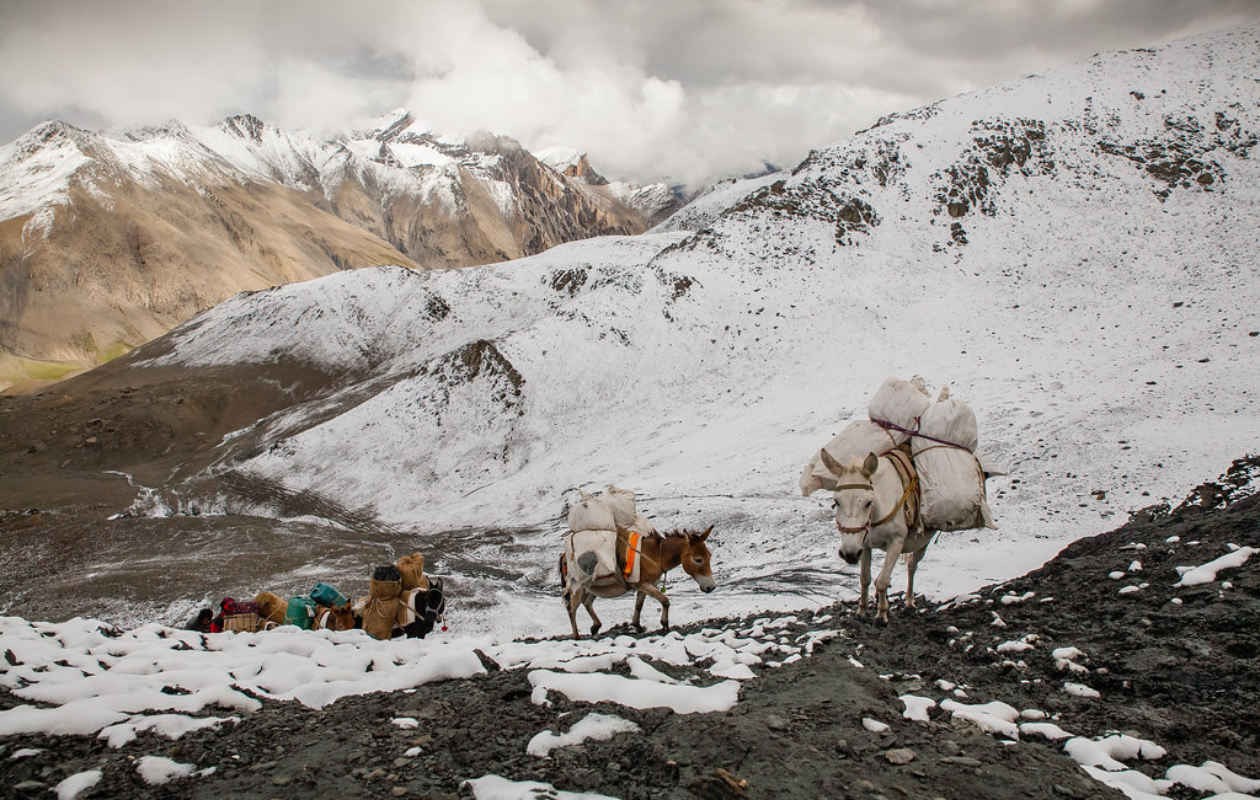Overview Of Nar Phu Trek:
In the remote reaches of the Annapurna region lies the Nar Phu Valley. This trek takes trekkers through some of the most rugged and untouched landscapes, and it is the true definition of solitude and remoteness. Compared to popular routes like the Annapurna Circuit or Everest Base Camp, it remains relatively unknown, providing a rare opportunity to experience Nepal’s pristine wilderness and traditional Himalayan culture.
The Nar Phu Valley opened to trekkers only in 2003 and is home to a blend of Tibetan-influenced culture. Dramatic high-altitude landscapes that feel frozen in time are the trek’s highlights. As you venture deeper into the Nar and Phu valleys, you’ll pass through canyons, beautiful villages, and sweeping vistas. In addition to its rugged beauty, the trek provides insight into the centuries-old lifestyle of the local people, whose traditions are kept hidden for a long time.
With its combination of raw natural beauty, cultural richness, and isolation, the Nar Phu trek promises an unforgettable journey for those looking for a unique adventure far from the well-trodden paths of mainstream trekking. In this article, let’s explore this amazing journey in more detail.
Highlights Of Nar Phu Trek:
- Remote Untouched Valleys: The Nar Phu trek takes you through the secluded Nar and Phu valleys, offering a rare glimpse into traditional Himalayan life. These valleys remain untouched by modern development. This is Annapurna’s most remote region. Its isolation and tranquility make it a perfect option for busier treks.
- Stunning Himalayan Scenery: Throughout the trek, you’ll be treated to breathtaking views of the towering mountains of the Annapurna Massif. Annapurna 2, Himlung, and Annapurna South are some of the most famous mountains that can be seen from the trek. The contrast between the rugged terrain and snow-capped mountains is a highlight of the trek.
- Cultural Immersion: Trekking through the villages of Nar and Phu offers an authentic cultural experience. The centuries-old Buddhist monasteries give you insight into the spiritual and cultural richness of the region. Interacting with the locals and witnessing their daily rituals is an enriching experience.
- Kang La Pass: Crossing the Kang La Pass at 5322 meters is one of the trek’s most exciting moments. The pass offers panoramic views of the Annapurna Massif and is a challenging yet rewarding part of the trek.
Facts Of Nar Phu Trek:
- Region: Annapurna, Nepal
- Maximum Elevation: 5322 meters
- Duration: 9-10 days
- Difficulty level: Strenuous/ Challenging
- Destination: Nar and Phu Valley

Route of the Nar Phu Trek
You’ll drive to Koto from Kathmandu to enter the Nar Phu Valleys. You’ll cross Besisahar on the way to Koto and enjoy a scenic countryside drive up there. The views of mountains like Ganesh and Manaslu gaze throughout the journey. The road condition from Besisahar is rocky and full of bumps. On the second day, you’ll trek from Koto to Meta. You’ll continue your journey to alluring dense forests of pine, chilly suspension bridges, cascading waterfalls, and traditional settlements of the locals. On the third day, you’ll trek to Phu Valley. You’ll see ancient Buddhist Monasteries along the way to Phu. The valley of Phu lets you experience unique culture and traditions dating back centuries in the Tibetan communities still unexposed to rapid urbanization. You can spend the day at Phu exploring the ancient cultures and learning more about the local traditions.
This is the Mid-Point Of Your Trek
The second half of the trek involves trekking to Nar Phedi. The steep ascent to Nar Phedi Monastery is the most strenuous part of the trek. You can reside at the Nar Phedi Monastery, which is a unique and enchanting experience. The next day, you’ll travel from Nar Phedi to Nar Village. There are multiple tea houses in Nar Village where you can enjoy local cuisine. On the next day, you’ll travel to the highest point of the trek, Kang La Pass. The pass rewards you with the spell-binding beauty of Annapurna II, Tilicho Peak, and Gangapurna in a 2-hour hike from Nar Village. You can explore this naturally gifted place and return to Ngawal.
The following day, you’ll descend more than 2000 meters from Kang La Pass and reach Dharapani or Besisahar. From there, you can drive to Kathmandu or Pokhara, ending your fantastic trek to the Nar and Phu Valleys.
Practical Information:
Accommodation:
Very limited homestays and tea houses exist in the less-explored Nar Phu region. However, it is still advised to trek to these tea houses or lodges rather than carry camping essentials. At higher elevations, tea houses lack Wi-Fi, hot water, and spacious rooms, so it is advised to be well prepared. There are more luxurious hotels and lodges at lower elevations, providing good food, hot water, and Wi-Fi services as well.
Best Time:
Autumn and spring are the peak trekking seasons in this region. In the spring (March-May), the Nar Phu valley swarms with butterflies. The skies are a lot clearer during this time, and the mountains are visible. Winter can be pretty harsh around this region.
Permits:
You need the Restricted Area Permit, as this place is regarded as a restricted trekking zone in Nepal. You also need the ACAP permit, which allows trekkers to trek in the Annapurna Conservation Area. Be sure to acquire these permits before trekking to this region.
Also Read: From Sunrise to Sunset: Perfect Day Treks In Pokhara


0 Comment